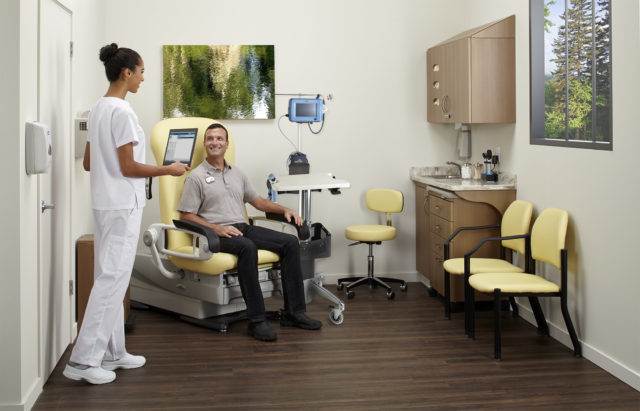
When it comes to technology, the pace of change is accelerating to a point where each month brings new developments. Rapid innovation has become imperative for healthcare organizations wanting to continue to enhance the quality of care provided at the point of care.
While there is extreme pressure on healthcare organizations to be at the forefront of this change, it is important that we in the healthcare community reset our approach to technology in the exam room.
If there’s one thing the issues created by the implementation of electronic medical records (EMRs) taught us, it’s that, when not approached properly, the introduction of new technology at the point of care can adversely impact the patient-caregiver experience.
Technology needs to provide real value and must be tailored to the intricacies of the clinical environment. It must augment the way patients and care teams interact and contribute to truly meaningful clinical insights for each encounter. Technology at the point of care should not be the focus of the experience but rather the conduit through which meaningful interactions occur and quality care is delivered.
For this to occur, technology integration at the point of care needs to be guided by a roadmap and guardrails that help organizations realize tangible benefits. Following are five considerations vital to help ensure a truly seamless deployment of new technology at the point of care that does not negatively impact the experience.
- Compatibility – This consideration gets to the very heart of technology integration. Challenges in the early stages of implementation often occur when the technology is not a good fit for the environment or application. In order to make an informed technology decision, you need to evaluate technology within the context of your current clinical environment and how it performs, as well as any business objectives and growth strategies. How does it impact the provider-patient experience? Is it flexible enough for projected growth? What value does it offer to the quality of care provided?
- Exam Room Workflow – When it comes to your point of care workflows, there are two ways to look at the technology in question. First, determine how the technology would fit into your existing workflows. What adjustments would need to be made? Would any workflows be improved or need elimination? Would the technology require the creation of new workflows? Second, determine if the technology would help you enhance existing workflows. For instance, real-time locating system (RTLS) technology provides insight into how a clinical environment is performing. RTLS makes capturing accurate workflow data possible, including communicating in-the-moment patient and staff locations, wait times and staff interactions, as well as providing a vast amount of retrospective detail.
- Connectivity – Technology advances are bringing us closer to realizing a fully connected digital ecosystem where point of care processes, equipment and caregivers are integrated. As you look at new technology, it is important to determine the level of connectivity it offers and how it will connect with the digital ecosystem you are creating. Is it able to connect to existing systems and equipment? Are there any additional technology or software requirements? For example, technology that introduces a new level of connectivity to vital signs acquisition would require workflow changes but could minimize human variations and inefficiencies by normalizing and automating the process.

The connectivity technology provides is a key element in determining its impact on the digital ecosystem you are creating. Technology that introduces a new level of connectivity to vital signs acquisition would require workflow changes but could minimize human variations and inefficiencies.
- Delivery and Setup – Coordinating equipment and technology deliveries to outpatient facilities is often complicated by the absence of receiving personnel, unloading and staging areas, and tools. Without proper installation or integration, promised performance levels and benefits may fall short of expectations. Facility operations or provider-patient interaction could be disrupted. You need to ask your equipment or technology vendor if they offer delivery setup and/or integration teams that can seamlessly connect the equipment or technology into your unique clinical environment.
- Staff Engagement – No one likes change. However, when managed properly, the initial reaction some staff may have to the changes introduced by new technologies can be effectively minimized and eventually eliminated as they gain an understanding of the value of the solution to your clinical environment and patients. This means letting your staff know what’s coming, answering questions, addressing concerns and explaining benefits. It also means offering structured, hands-on training with the technology and an opportunity to share feedback during the early stages of implementation.

Technology can enhance the humanistic aspects of care delivery, allowing caregivers to reclaim their time with patients at the point of care.
With the right framework and priorities in place, advanced technology can help ensure a more satisfying and seamless experience for patients and caregivers. Most importantly, it can maintain the humanistic aspects involved in care delivery, allowing caregivers to reclaim their time with patients at the point of care.









